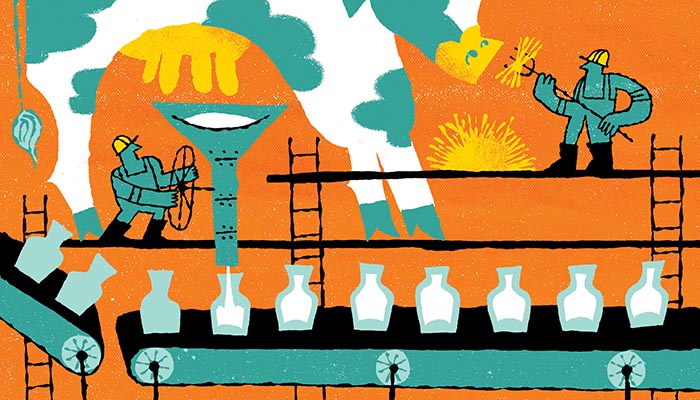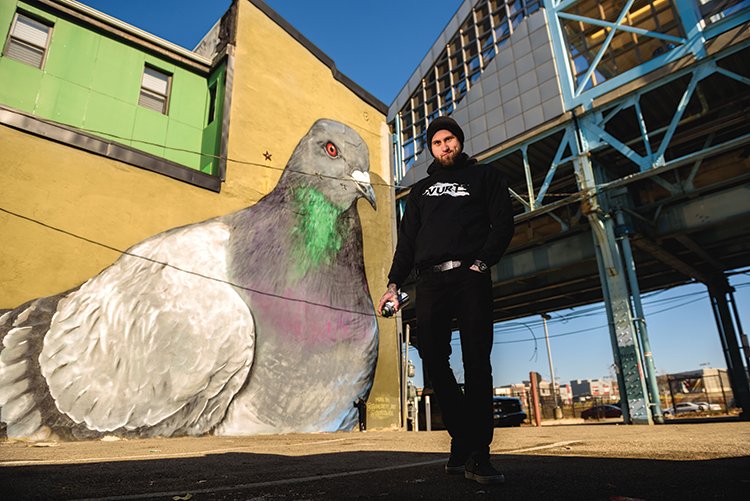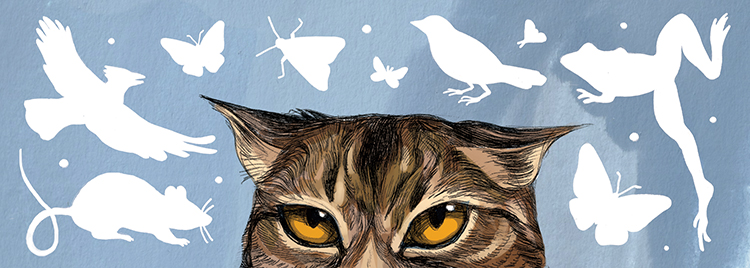by Rachel Atcheson
Have you been inside a factory farm?” It’s the question I’m most often asked as I give presentations to students about large industrial farms. Until recently, the answer was “no.” Instead I relied on the experiences of two trusted friends who worked as undercover investigators at several facilities. At each one they witnessed the same cruelty and appalling conditions.
I finally had the chance to see it myself when a friend asked me to help him film a dairy farm for a documentary. The facility was certified organic, and I was hoping to see fields of grass and healthy, well-treated cows in an environment that bears some resemblance to the bucolic imagery on milk cartons.
What I saw was a crowded feedlot lined with dirt, mud, and manure. The stench from piles of waste was overpowering, and the cows’ legs and hides were caked with feces. A conveyer belt of 75 cows rotated on a milking machine the size of a city intersection. Each cow entered the machine three times a day and had tubes put on her udders to be milked. It would be inefficient for a human being to do the work. I saw cows who had the tubes fall off their udders; no one put them back on. I knew what that meant for them: the mother cow would not be milked for another eight hours, effectively condemning her to hours of pain and discomfort from swollen udders.
Many people forget that dairy cows produce milk because they have given birth, just like human moms. The mother cows and calves are separated days after birth. Down the road from the milking station, hundreds of calves were tied to hutches and allowed three feet of rope to move. Another was discarded, dead on the side of the road.
Each of the 1,000 milk cows on the farm I saw is a mere milk machine for the industry, and their bodies are taxed year after year by an endless cycle of births and milkings. They hung their heads as they walked. I don’t need to be a cow to recognize unmistakable sadness and despair. It hit me that each one would be dead in at most a few years—slaughtered after just a fraction of her normal lifespan. The moment a cow’s body is spent and her milk production begins to decline, she will be rendered into low-grade beef.
I’m glad I saw it for myself. No undercover video or second-hand description of a factory farm could quite do these horrors justice. Most of the animals we see in videos are already dead, so sparing them from a miserable life and gruesome death isn’t possible. To see the living with my own eyes—and to know what fate awaits them—was unbelievably, crushingly sad, but I walked away a better advocate because of what I saw that day, and a stronger resolve to help.
The next time that a student asks me if I have seen the conditions on a factory farm, I’ll tell them, “yes.” While not all of us will be able to have the experience I did, we can all be a witness.
Our desire to shield our eyes in the face of cruelty, whether to humans or animals, is natural. We’re avoiding discomfort. But when we look away for too long, and hide from reality rather than confront it, we chip away at one of our greatest qualities: our empathy.
Rachel Atcheson is the Director of Campus Outreach at the Humane League.










Would people still buy milk products if they put what you described on the label?… Probably not! Many aren’t fully aware of the industry they’re supporting on a daily/weekly basis.
What a unique experience it must’ve been to be there, I do not know if I would have been able to handle it. I can just imagine what a sad and painful life those cows endure.
This gave me chills. People really do lose their empathy. It’s scary to think that even as information like this becomes more widely available, people still choose to close their eyes, drink their milk, and eat their steaks.
This gave me chills. People really have lost empathy. It scares me that even with this information widely available people still close their eyes, drink their milk, and eat their steaks.
this article is so misleading – we are dairy farmers in suburban Pa and, though there are a precious few facts here the context and impressions are so misleading and inaccurate. Most folks working in animal agriculture are doing it because they enjoy working with animals. Caring for those animals sometimes includes difficult choices and even death – just as with anyone sharing their lives with an animal. Please don’t judge an industry when you have absolutely no basis of knowledge about that industry. To do so is truly a disservice to the public putting their trust in you as a journalist.